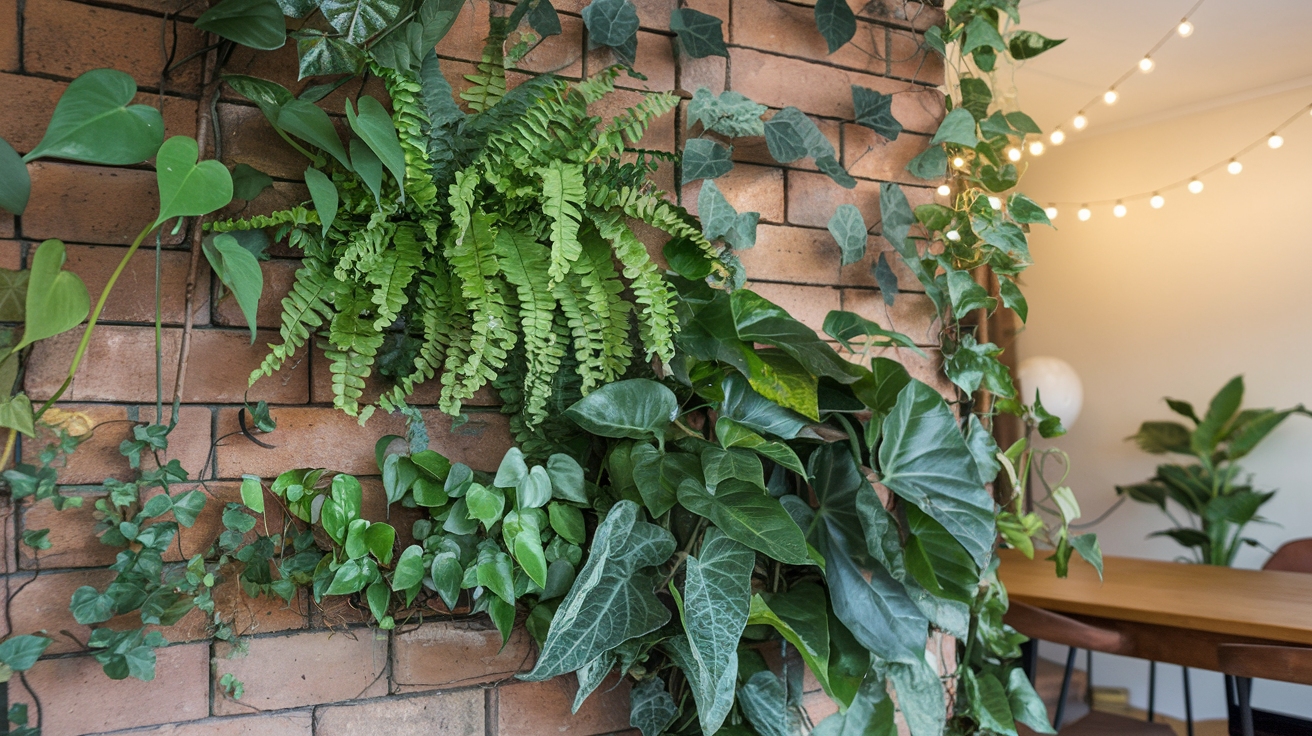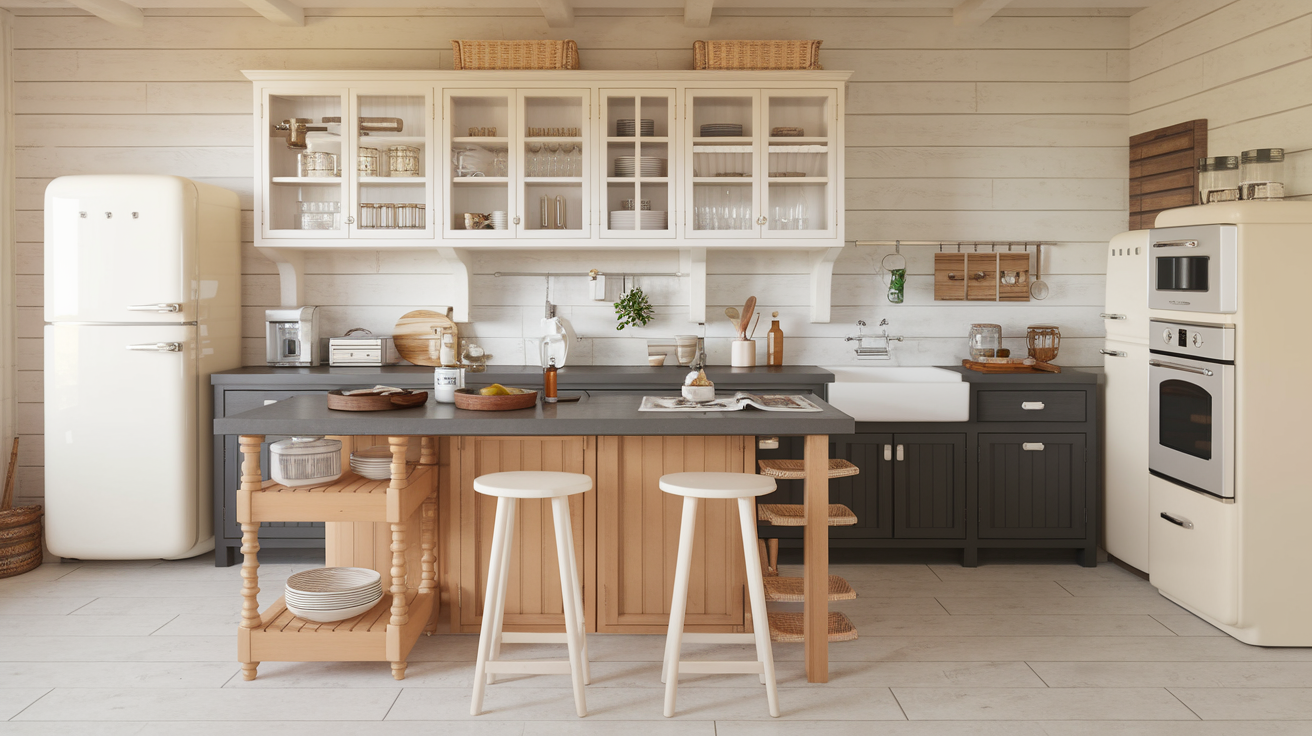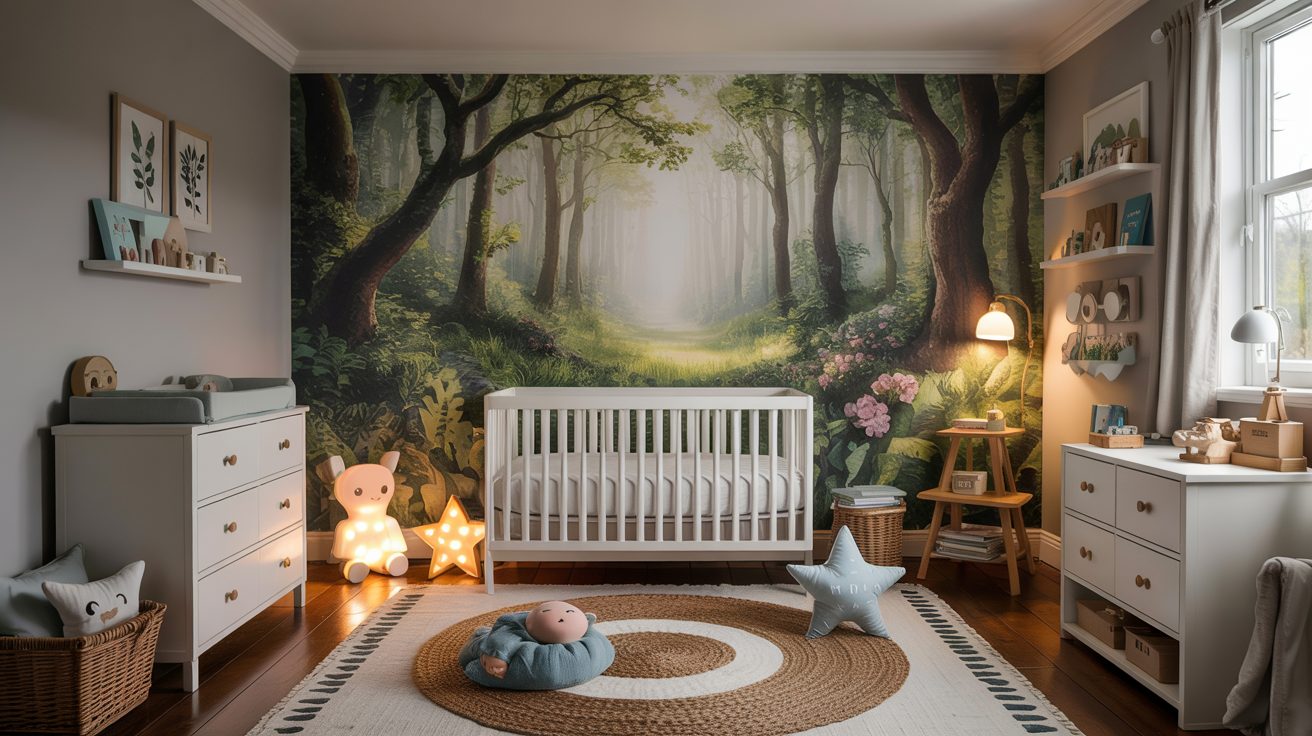I’ve always loved the idea of bringing nature into my home, and a thriving indoor plant wall was exactly what I needed to add life to my space. Over the years, I’ve realized that setting up a green wall involves much more than just choosing plants – it’s about picking the right spot, the right plants, and maintaining them.
A vertical garden isn’t just a beautiful addition to your home; it’s also a sustainable way to enhance any room with natural vibes. My experience taught me the importance of selecting plants that suit the environment and taking the time to care for them, so your plant wall will thrive for years.
Whether you’re designing a vertical garden, a living wall, or a greenery display, proper planning and maintenance are essential for keeping your plants healthy and vibrant. In this guide, we’ll explore tips for creating and maintaining an indoor plant wall, ensuring that your vertical plant arrangement flourishes for years to come. With these tips, you’ll be able to create your own lush, living masterpiece.
1. Choose the Right Location for Your Green Wall

When setting up a green wall in your home, choosing the right location is key. I always make sure the spot gets indirect sunlight because most plants thrive with a little light, not too much. Think of it like finding the sweet spot where your plants will feel right at home – not too hot, not too cold.
If natural light is scarce, I recommend using grow lights or opting for low-light plants that will still add a lush vibe. It’s about making sure the environment suits the plants’ needs, so they can thrive and bring that refreshing touch to your space.
2. Select Suitable Plants for Your Living Wall

Choosing the right plants is crucial for a successful vertical garden wall. Some of the best options for an indoor greenery wall include:
- Pothos – A low-maintenance plant that thrives in various light conditions and is great for air purification. I highly recommend it if you’re looking for something that’s easy to care for and adds lush greenery to your wall.
- Ferns – These plants love humidity and are perfect for bright, indirect light. If you have a bathroom or a kitchen area with a bit more moisture, ferns are an excellent choice to add that natural, tropical feel.
- Spider plants – Spider plants are incredibly adaptable, requiring minimal care while offering a charming appearance with their cascading leaves. I find them to be a versatile, great option for beginners wanting a mix of ease and style.
- Succulents – Perfect for bright, dry spots, succulents bring texture and color to your plant wall with their unique shapes. If you live in a space with lots of natural sunlight, they’re ideal and won’t require frequent watering.
- Philodendrons – Known for their hardy nature, philodendrons are excellent for creating cascading effects with their long vines. I love these for their elegance and how they drape beautifully, making them ideal for hanging or wall-mounted planters.
Mixing different leaf shapes, colors, and sizes creates a more dynamic and visually appealing plant feature wall.
3. Use the Right Plant Wall System

There are several ways to build a vertical plant wall indoors:
- Wall-mounted planters – Great for a minimalist look
- Floating shelves – Allow flexibility in arranging plants
- Pocket planters – Fabric or felt pouches that hold multiple plants
- Trellises or grids – Ideal for vining plants like ivy or pothos
- Modular living wall panels – Self-watering systems that make maintenance easier
Select a system that complements your space while providing proper drainage and air circulation for healthy plants.
4. Ensure Proper Watering and Drainage

Overwatering is a common mistake when maintaining an indoor vertical plant wall. To prevent root rot:
- Use pots with drainage holes or a self-watering system
- Water plants based on their specific needs (succulents need less water than ferns)
- Install a drip irrigation system for hassle-free watering
- Use a moisture meter to check soil dryness before watering
5. Maintain Proper Humidity Levels

Many plants in a greenery wall arrangement thrive in humid environments. If your home has dry air, consider:
- Using a humidifier to maintain optimal moisture levels
- Misting plants occasionally, especially ferns and tropical species
- Placing a small water tray near the plant wall to increase humidity naturally
6. Prune and Rotate Plants Regularly

To keep your wall garden looking fresh and full:
- Trim dead or yellowing leaves regularly
- Rotate plants to ensure even light exposure
- Fertilize every few weeks with a diluted liquid fertilizer
- Remove overcrowded plants to allow air circulation
Proper maintenance prevents pests, diseases, and uneven growth in your vertical plant arrangement.
7. Add Decorative Elements to Enhance Your Plant Wall

To make your botanical feature wall even more visually appealing, consider adding:
- Fairy lights for a cozy ambiance
- Decorative pots in neutral or earthy tones
- Wooden or metal frames to structure the design
- Small hanging ornaments for a personalized touch
These elements can make your greenery display blend seamlessly with your interior decor.
Creating and maintaining a plant wall indoors requires careful plant selection, proper watering, and regular upkeep. By following these indoor plant wall tips, you can enjoy a beautiful, thriving vertical garden that enhances your home’s atmosphere. Whether you prefer a minimalist look or a lush jungle vibe, an indoor living wall is a fantastic way to bring greenery into your space effortlessly.
My Personal Experience with Creating a Plant Wall

This is a great idea of having a lush greenery wall in my home, but my first few attempts were far from successful. I struggled with choosing the right plants, overwatered some, and completely neglected others. At one point, I even considered giving up on the idea altogether. However, after researching and learning from my mistakes, I finally managed to create a thriving plant wall that not only looks beautiful but is also easy to maintain.
What Helped Me Grow a Flourishing Plant Wall

- Choosing the right plants – Instead of selecting plants just for their appearance, I focused on species that matched my home’s light and humidity levels.
- Investing in proper drainage – I realized that many of my plants were dying due to waterlogged soil, so I switched to pots with drainage holes and improved air circulation.
- Setting up a watering schedule – I stopped guessing when to water and started using a moisture meter to ensure each plant got the right amount of water.
- Using a mix of plant wall systems – Instead of sticking to one method, I combined floating shelves, wall-mounted planters, and trellises for a dynamic and structured look.
- Being patient – Plants take time to grow and adjust, so I learned to enjoy the process instead of expecting instant results.

Now, my vertical garden is one of my favorite features in my home. It took trial and error, but the effort was absolutely worth it!



